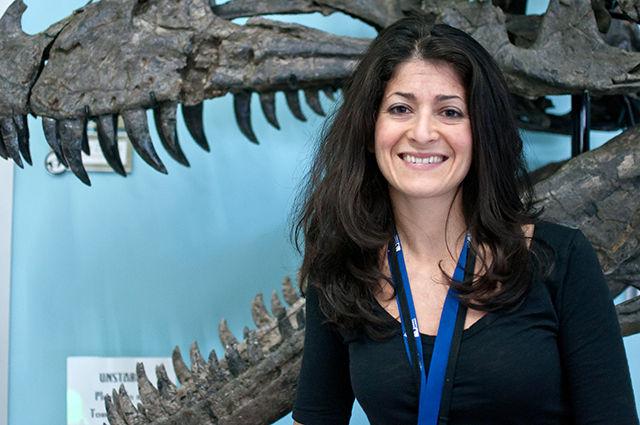Before dinosaurs roamed the Earth, a crocodilian ancestor recently discovered in part by NC State paleontologists was likely to be one of the top predators in North America.
The paleontologists from NC State and the North Carolina Museum of Natural History found the Carnufex Carolinensis specimen in Chatham County, about an hour southwest of Raleigh.
The team recovered parts of the Carnufex’s skull, spine and upper forelimb, but did not have a full skeleton to adequately determine how the species looked. To better gauge the skull, the researchers used imaging technology to create a 3-D model of what the skull might have looked like, filling in the unknown pieces with the more-complete skulls of other known relatives.
Lindsay Zanno, an assistant research professor at NC State who is the lead author on a paper for the new species, said the Carnufex, which roamed the earth in the Triassic period nearly 31 million years ago, had an upright stance, unlike the sprawling stance crocodiles have today.
The earliest crocodiles were land-dwelling animals and later evolved to become the semi-aquatic creatures people know today.
Zanno said the newly discovered species also had shorter arms and longer legs than the crocodiles humans are familiar with.
Although the specimen the researchers found was not yet fully grown, they fused its skeleton together and were able to estimate that the specimen would have likely been about 10 feet long, according to Zanno.
“He kind of looked like a crocodile, but walked up right,” Zanno said.
Susan Drymala, a graduate student at NC State and co-author of the paper on this new species, said Carnufex was a big animal even for its time and definitely larger than any animal that walks the Earth today.
Even so, Drymala said, the species still didn’t measure up to the dinosaurs that came after it.
Zanno said the researchers do not have any direct evidence of what the species may have eaten, such as stomach content or bite marks. However, researchers are confident there were animals living in the area that Carnufex could have preyed on, such as some mammals and other crocodile relatives and armored reptiles.
Because Carnufex was a top predator and the largest animal that was found in that ecosystem, researchers assume it would have eaten just about anything that was around.
Zanno said these findings help teach people how ecosystems change after mass extinctions.
Before the Carnufex evolved, a mass extinction wiped out most of the animals and plants living on the planet. During the recovery after the extinction, the planet saw an explosive evolution of different types of vertebrates. Mammals, turtles, crocodiles and dinosaurs all evolved during this time period.
During the time in which Carnufex would have lived, a wide variety of predators were competing for the same resources, Drymala said.
Drymala said this time was already known to have far too many predators than what is considered normal for an ecosystem, and the discovery of this animal adds yet another top predator to the list.
“We see a lot of different types of predators in the Triassic when this thing lived, all sort of showing different top predator niches,” Zanno said.
Zanno said it wasn’t until Carnufex and many other predator species went extinct after another mass extinction event that dinosaurs were able to take over those niches and become the dominant predator on land.
“It’s a new species unknown to science, and it’s important that we figure out what lived when on the planet if we want to understand how life evolved and the relationship between animals and their environment,” Zanno said.








